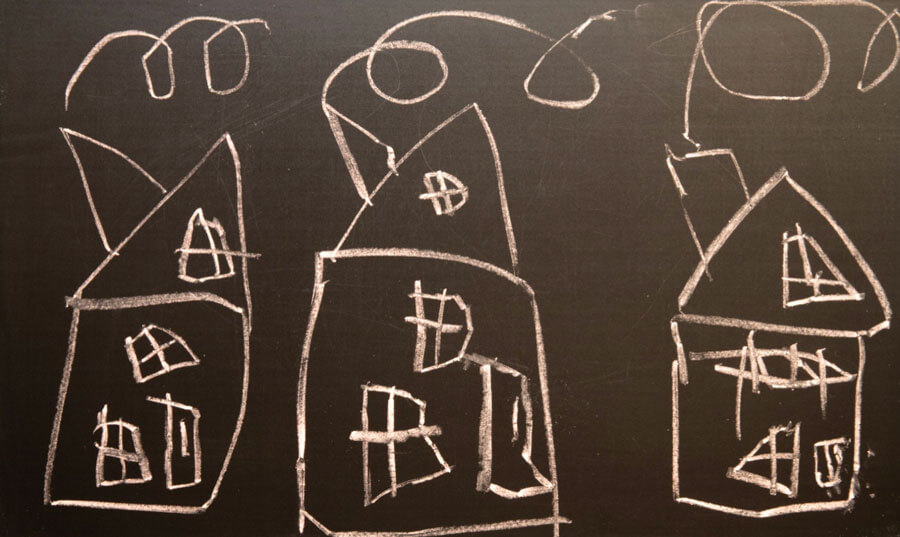Frequently Asked Questions
Answers to key questions solving the mysteries of how Architects operate.
Ever wondered how and why people would engage that polo necked Architect you see regularly frequenting your local coffee shop?
Read on to learn the truth about this exotic yet mysterious profession.
What is the difference between an Architect and a building designer or draftsperson?
Architecture is a highly skilled profession requiring 5-6 years of university study to gain an architectural degree. The course also teaches Architects to survive sleep deprivation and become caffeine addicts.
A minimum of two years of post-graduate work experience is then required before sitting registration exams permitting the use of the term Architect. This is equivalent to a Royal Title.
Thereafter all practising Architects must undertake a minimum of 20 hours continuing professional development (CPD) activities every year to maintain their registration, and the right to continue being referred to as Sir or Lady.
Conversely, in most states of Australia anyone who can hold a pencil can operate as a building designer or draftsperson without needing any qualification or tertiary education whatsoever.
When might you hire an Architect?
Architects are recommended for larger, more complex projects or where a high level of design detail is required. Architects tend to invest a lot of time developing the best design solution from both an aesthetic and functional perspective. They also make good dinner guests as they can stay up late.
In most states, government projects or buildings over three stories must be designed by an Architect. Most building designers can’t count that high.
Building designers are typically better suited for smaller, less complex designs. Like dog kennels. In many cases they are engaged to simply perform a technical drafting function with little emphasis on design quality. It’s a dog eat dog world out there.
How do Architects establish their fees?
Design is not a readily quantifiable product or service. Architects base their fees on experience to estimate the amount of time likely to be required to perform the service. Either that or they take a blind stab in the dark.
Historical data has shown a correlation between construction cost and design time for projects of different complexities. Consequently, Architects often quote fees based on a percentage of construction cost. These fees can either be a fixed lump sum based on the original agreed budget, or variable and adjusted once the final construction value is determined.
With fixed lump sum fees, the Architect carries the risk of completing the project within a set time frame. Fixed fees therefore tend to have a proportion of contingency included to offset this risk. Or to cover the cost of the Architect’s sleep therapy and medication.
Time charge fees are another option which negate this risk. An hourly rate is established incorporating allowances for wages, overheads, and profit. The Architect charges only for the actual time spent on the project. This can be capped to suit a fixed budget or monitored on a regular basis. This ensures the fees don’t blow out unexpectedly due to the Architect’s increasing propensity for attending coffee shop “meetings”.

How do I select a suitable Architect?
Architecture is generally practiced in the public domain, so most Architect’s work is on prominent display for anyone to view. Identifying buildings that appeal to your aesthetic taste is the best starting point and can be done by simply driving around your neighbourhood streets. Alternatively, stay at home and search online.
There are many websites that specialise in featuring photos of architecturally designed buildings which will normally identify the Architect responsible.
Houzz is one such site specialising in residential projects. Created by an American couple with very questionable literacy skills, it is the Pinterest of residential design.
Once you have identified an Architect(s) that you like, read their online reviews or seek referrals from past Clients.
Read here for a more detailed guide to Selecting an Architect.

How does the design process work?
Design is an intangible skill, but with architectural design it does follow a relatively orderly process.
After meeting with the client and establishing a brief, the Architect will begin by preparing sketch drawings. As the name suggests, these can be hand drawn sketches that identify the approximate size and location of rooms relative to one another. They may also include indicative elevations or 3D drawings that define the building form. Refer illustration below.
Most Architects will allow up to three design iterations to resolve the design. Refer again to illustration below.
Once the client approves the sketch design, the Architect will then develop the design in more detail – oddly referred to as detailed design, or design development.
Equating the sketch design stage to the creation of a skeleton, the design development phase fleshes it out to create the finished product. Much like Frankenstein, but with a far more aesthetically pleasing outcome.
This involves fixing the dimensions of plans and elevations and selecting all the building materials and finishes required to construct the building.
To all intents and purposes, this is the end of the design process. Further stages are predominantly involved with documenting the design to enable it to be priced and built.
You can find more information on the far less exciting documentation stages that Architects normally hire draftspeople to do for them at Principal Architect Services.

How do I know if I’ll like the design?
Design is essentially problem solving. The design brief establishes the parameters of the problem to be resolved and is critical to a successful outcome. Being an artistic profession however, there is never a single correct design resolution for any project. The success or otherwise of the final design is a highly subjective assessment. You either like it or you don’t.
Communication is the key to achieving a successful design outcome. The client must be able to articulate their needs and desires effectively to the Architect, and in response the Architect needs to be able to clearly present their design vision to the client. As in a successful marriage, you need to be able to express your thoughts and feelings to one another. This avoids the potential for a messy divorce.
Fortunately, the Architect has many tools at his / her disposal to do this.
VR is the game changing innovation that will provide the client with the certainty that they need to approve the design well before it commences construction. Its also a lot of fun, equivalent to gaming, a fortnite experience without weapons.

How do I ensure the design matches my budget?
Every bespoke Architectural design is unique, and there are numerous variables that impact on building costs. Added to this, the ever-fluctuating property market sees construction rates rise and fall based on demand.
Architects are not trained as cost planners. Experience may allow Architects to provide some approximate cost guidance based on rates achieved for similar projects, however where budget is important, external advice should be sought from specialists in this field. Architects are much better at scribbling than calculating.
Cost planning can be provided by Quantity Surveyors or Builders and should be sought early in the design process. That way if any design changes are required to meet the budget, they can be incorporated before the design is finalised. This can also avoid upsetting the Architect.
What next?
Why not contact LDS to discuss your next project. We offer free no obligation initial consultations to all prospective clients. We’ll even buy you a coffee and scribble a concept.
Give us a call on 07 5660 6176 or Contact Us.

Still have questions? Send us a note!
For any other questions, please write to us at info@leadesign.com.au or call us on 61 7 5660 6176
